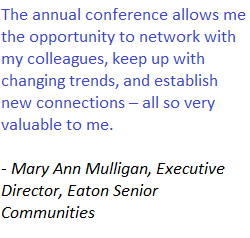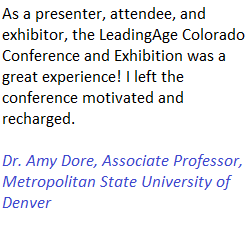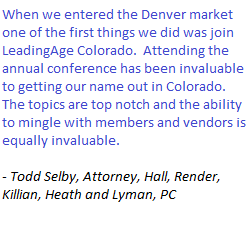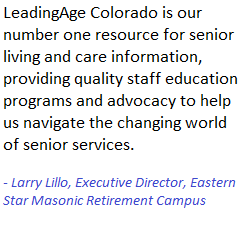$6,000 pay gap persists between men and women nurses
A stubborn pay gap continues between male and female nurses, despite the fact that women continue to dominate the ranks of the profession, according to new research.
That was one of the key takeaways from a new study released Monday by Nurse.com and its parent company, OnCourse Learning. Polling some 4,500 RNs from across the country, researchers found that male nurses earned an average salary of nearly $79,700. That's more than $6,000 greater that the roughly $73,100 earned by their female counterparts. Men make up only about 12% of the nursing workforce.
Male nurses are collecting more, even when age, experience and education are taken into account, those involved note.
Read more.
When facing a shortage of licensed nurses, certified nurse aides trained as medication assistants can be a viable alternative, according to a pilot study detailed in the Annals of Long Term Care.
Washington state has 5-year-old law allowing certified medication assistants, or MA-Cs, to administer certain medications to nursing home residents under the supervision of a registered nurse.
Previous research found no significant changes in medication error rates when medication techs were use, and this program set out to determine what would happen to staffing costs after using medication assistants who received specialized training through the Geriatric Interest Group of Spokane.
Read more.
Senior living communities and long-term care facilities employ workers in job categories that are expected to be among the fastest-growing types over the next 10 years, according to projections from the Bureau of Labor Statistics — and workers in those categories earn less than what it takes to be able to comfortably afford one- or two-bedroom housing, according to a new report.
The 2018 “Out of Reach” report, released Wednesday by the National Low Income Housing Coalition, bases its findings on data from the Department of Housing and Urban Development in addition to the BLS.
According to the report, U.S. renters who work full time must earn at least $17.90 per hour to be able to afford a “modest” one-bedroom rental home without spending more than 30% of their incomes on housing costs.
Read more.
It can be as simple as guiding someone to a toilet instead of a urinal, or pausing to consider which pronoun to use when addressing a dementia patient or the person’s partner.
Growing awareness of gender identities and sexual orientations is prompting policy changes in law enforcement, medical care and the military. Now, in the Bay Area, advocates hope it will also change how professional caregivers for the elderly interact with LGBT seniors, particularly those with dementia.
The city of San Francisco, through its Department of Aging and Adult Services, is funding a $400,000 effort to train hundreds of workers at companies and public agencies on how to better communicate with aging LGBT adults. Primarily aimed at home care aides and staffers at senior centers, it is also offered to organizations that interact with seniors regularly, like Meals on Wheels and public transit employees.
Read more.
Direct-care agency bumps pay to attract new workers, reduce turnover
Saying its front-line workers have been overburdened and underpaid, a local agency that provides support services for people with disabilities is raising its starting pay rate by nearly 28 percent, to $13 an hour.
“They haven’t just gone that extra mile. They’ve gone about five extra miles for us,” said Matt Hobbs, human resources director at Boundless. “These employees are the heart of what we do.”
He and other administrators are taking “a leap of faith,” hoping that higher wages will attract workers and reduce soaring overtime and staff turnover costs. Ohio and most other states throughout the nation are facing a severe shortage of workers who provide support and care for people with developmental and intellectual disabilities.
Read more.
Several ways exist to increase your organization's LGBT cultural competency
A new ad will be creating conversations and opportunities for senior living communities and long-term care facilities to share where they stand on housing lesbian, gay, bisexual and transgender older adults.
The ad, released Thursday by SAGE Advocacy & Services for LGBT Elders and the Movement Advancement Project, depicts an older man in a wheelchair entering an assisted living community with younger loved ones on move-in day. Staff members greet him warmly, but then the executive director spots a “25th anniversary” photo of the man with another man among the resident-to-be's possessions. The man is shown the door. (Watch the ad for yourself below.)
Read more.
First Female Dean ‘A Sea Of Change’ At USC’s Scandal-Plagued Medical School
The University of Southern California veered sharply and deliberately from tradition in naming the first woman — and the first geriatrician — to lead its 133-year-old medical school.
Dr. Laura Mosqueda, who took over the position on May 1, says she’ll work hard to steer more young doctors toward elderly care to treat the country’s aging population. At the same time, she will face a stiff challenge trying to help rehabilitate the image of USC as it grapples with the growing fallout from recent drug and sexual misconduct scandals.
Mosqueda’s appointment is partly the result of USC’s #MeToo moment. It sends an unmistakable message that campus officials want to open a new chapter after the sobering revelations that toppled Mosqueda’s two immediate predecessors and the university’s president — all men.
Read more.
More staffing, training could reduce deaths from dementia-related resident-on-resident violence, researcher says
Addressing staffing and training issues could help reduce the number of deaths from resident-on-resident incidents involving assisted living and nursing home residents with dementia, says the author of a recently published study on such incidents.
Eilon Caspi, Ph.D., a research associate in the University of Minnesota School of Nursing, based his assessment on the review of more than five years of newspaper articles and other media reports as well as medical examiner documents, deficiency statements and plans of correction accessible via the Centers for Medicare & Medicaid Services, policy reports and other materials. His findings were published online ahead of print May 31 by the Journal of Elder Abuse & Neglect.
Read more.
Can Tech Solve the Jobs Crisis in Seniors Housing?
Two statistics exist today that put the seniors housing industry in a precarious position. One is that adults over age 65 account for 15 percent of the total U.S. population – a figure that is projected to swell to 25 percent by 2060, according the U.S. Census. The second stat revolves around the seniors housing workforce.
Only 933,000 people currently work in this industry in the United States. This has created a need for an additional 300,000 employees by 2026 to keep pace with seniors demand, according to Argentum, which held its annual conference at the San Diego Convention Center May 14 to 16.
Heavy hitters within the industry are doing what they can to combat this. Argentum, for one, has launched the Senior Living Works initiative to connect those within the industry to a pipeline of potential workers and educators.
Read more.
|








